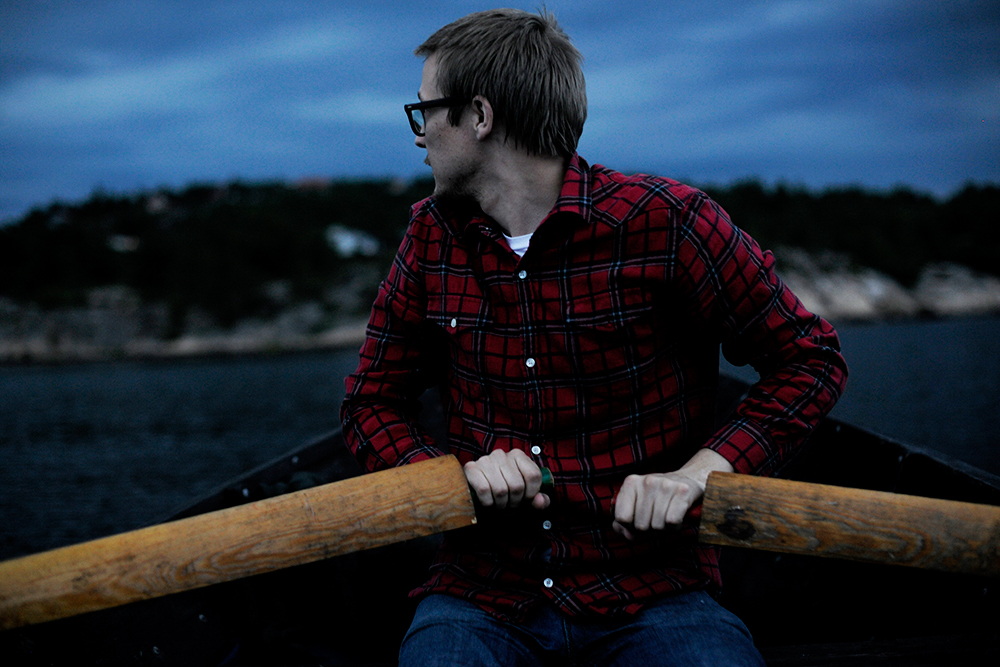
Michelle Arcila
Michelle Arcila is a Costa Rican/Colombian photographer based in Brooklyn, NY. She began working with photography at the age of 14 and received her B.F.A. in photography from the School of Visual Arts in 2002. Her work often makes subtle references to her cultural heritage; often using self-portraiture, family, friends as well as nature in her work to help illustrate familiar relationships, memories, and folklore. Michelle has exhibited in Poland, Australia, Belgium, Norway, Paris, Italy and New York. Her work has been published in Vogue Girl Korea, Metro Pop, Les Inrockuptibles, Elle Decor, and the NY Times. Her work also appears in a number of private collections.
A Thousand Ancestors
A Thousand Ancestors is the culmination of a long-standing collaboration between photographer Michelle Arcila and musician/bassist Eivind Opsvik which synthesize the strong influence of visual imagery on music, and vice versa. Hailing from Costa Rica and Norway, two different countries with distinct cultural traditions and folklore, A Thousand Ancestors is an exploration of family history and the continuing influence of ancestral narratives on the present generation.The artists aim to slow time for the observer, and allow him/her to perhaps uncover distant, buried memories of their own during the encounter.






Interview with Michelle Arcila
Foto Féminas: How did it come about your project, A Thousand Ancestors?
Michelle Arcila: A Thousand Ancestors started in a very organic way. My husband, the musician Eivind Opsvik, and I have always enjoyed collaborating together, it’s how our relationship started, and so when he started to do more solo performances it only seemed natural for us to collaborate together for his live performances with projections.
To learn more about the project, here.
Michelle Arcila
Michelle Arcila es una fotógrafa Costarricense/Colombiana radicada en Brooklyn, Nueva York. Ella empezó a trabajar con fotografía a la edad de 14 años y recibió una licenciatura en fotografía de School of Visual Arts de Nueva York en 2002. Su trabajo normalmente hace referencia a su herencia cultural; usualmente utilizando el auto-retrato, familia, amigos así como también la naturaleza en su trabajo para ilustrar las relaciones familiares, recuerdos y el folklore. Michelle ha exhibido en Polonia, Australia, Bélgica, Francia, Italia y Nueva York. Su trabajo ha sido publicado en Vogue Girl Korea, Metro Pop, Les Inrockuptibles, Elle Decor y NY Times. Su obra también forma parte de colecciones privadas.
A Thousand Ancestors
A Thousand Ancestors es la culminación de un proyecto colaborativo a largo plazo entre la fotógrafa Michelle Arcila y el músico/bajista Eyvind Opsvik, quien sintetiza una gran influencia visual en la música y vice versa. El proyecto cae desde Costa Rica y Noruega, dos países tan diferentes con culturas y folklore distintivo. A Thousand Ancestors, es una exploración de historias familiares y la continua influencia de las narrativas ancestrales de la generación presente.Los artistas buscan detener el tiempo para el observador, y permitirle la posibilidad de destapar recuerdos distantes o enterrados.
Entrevista con Michelle Arcila
Foto Féminas: ¿Cómo surgió tu proyecto, A Thousand Ancestors?
MA: A Thousand Ancestors empezó de una forma muy orgánica. Mi esposo, el músico Eyvind Opsvi, y yo hemos siempre disfrutado colaborar juntos, de hecho es como nuestra relación empezó, así que cuando él empezó hacer más recitales solo se dió de forma natural para nosotros colaborar juntos para su recitales en vivo con proyecciones.
FF: ¿Por qué crear una colaboración musical y fotográfica entre tu esposo y tú?
MA: Nos tomo unos 3 años para completar el proyecto, pero empezamos a realizar recitales en vivo hace unos 7 años (Eivind solo en el bajo y yo con mis proyecciones) Yo también dí a luz a mi hija durante este tiempo que empezamos a trabajar en la producción del disco y caja. Así que convirtiéndonos en padres definitivamente causó un efecto en el proyecto y lo ayudó a dar forma en lo que se convirtió.
MA: Si, fue la primera vez que trabajo con una persona de este modo, pero a su misma vez pienso que fotografía es usualmente un proceso colaborativo, especialmente si estás tomando el retrato de alguien.
FF: Cuando nos conocimos personalmente en Nueva York, fue interesante escuchar como la cultura latinoamericana y tu herencia cultural de tus padres, siendo de Costa Rica y Colombia, han influenciado tu obra fotográfica. Nos podrías hablar de cómo tus raíces latinas han influenciado este proyecto.
FF: El enlace familiar se ve marcado en todos tus proyectos. Hablanos un poco sobre esto.
MA: Bueno, crecí con una madre soltera en Long Island, NY. De alguna forma graciosa, creciendo siendo única hija me hizo obsesionarme un poco con la idea de familia. Claro, tengo una familia muy larga en CostaRica y en Colombia (no conocí algunos de mis medio-hermanos hasta que estaba en mis 20s y 30s) Sin embargo, aquí en NY, nos sentíamos solas. Tuvo que crecer rápido, ya que básicamente me convertí en la pareja de mi madre. La tenía que ayudar a rellenar planillas, realizar llamadas por ella, básicamente brindarle mucho apoyo moral desde una temprana edad; no solo por la barrera del idioma, pero porque las cosas eran difíciles y ella me necesitaba. Mi madre sin duda alguna logra acceder a mis proyectos porque siempre está en mi mente.
Para saber más sobre el trabajo de Michelle, aquí.
Para saber más sobre el proyecto, aquí.
